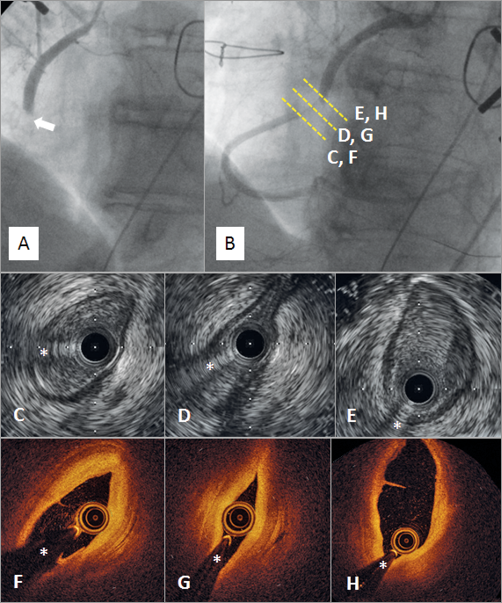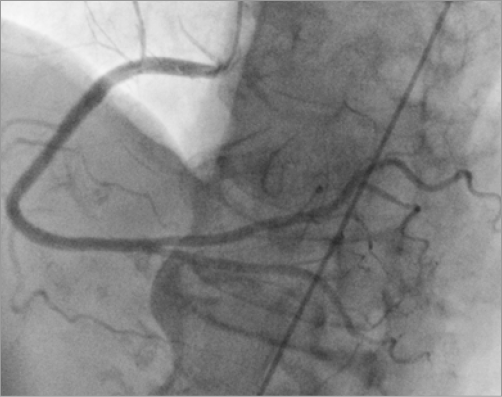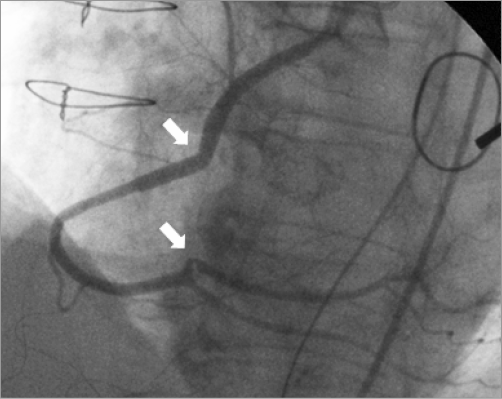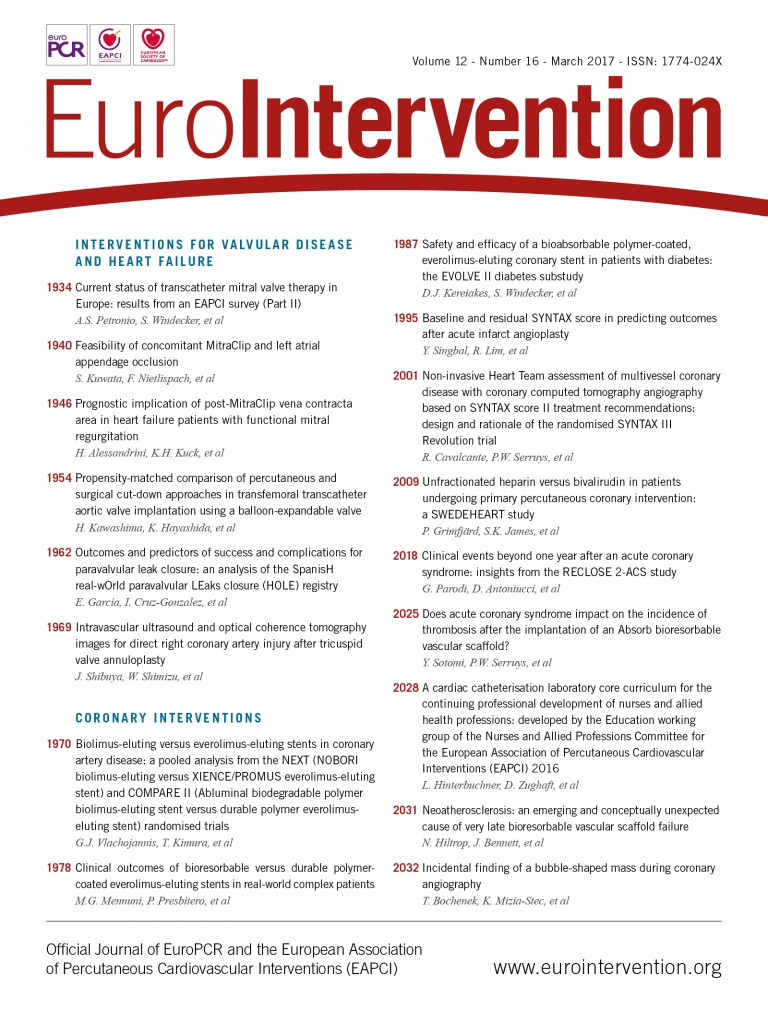

A 76-year-old female was admitted with dyspnoea and leg oedema. Echocardiography showed severe mitral and tricuspid valve regurgitation with marked right ventricular (RV) dilatation, and coronary angiography showed intact left and right coronary arteries (RCA) (Online Figure 1). She was diagnosed with heart failure due to combined valvular disease and underwent tricuspid valve (the Kay bicuspidisation technique without ring) and mitral valve annuloplasty. After the operation, she suffered from myocardial infarction with ST-segment elevation in the inferior leads. Coronary angiography showed a total occlusion (arrow) at the middle portion of the RCA (Panel A, Moving image 1). After passing a wire through the lesion, angiography revealed a bent RCA with tight stenosis (Panel B, Moving image 2). Intravascular ultrasound (Panel C-Panel E, Moving image 3) and optical coherence tomography (Panel F-Panel H, Moving image 4) showed a distorted and collapsed vessel without obstructive thrombi at the bent portion of the RCA. Stenting (Nobori™ 3.5/24 mm; Terumo, Tokyo, Japan) improved coronary flow, with two bends at the middle and distal parts of the RCA (Online Figure 2, Moving image 5). The stent patency was confirmed by coronary angiography five months after the procedure.
Intracoronary images described the distorted and collapsed RCA at the bent part, which was caused by Kay bicuspidisation annuloplasty, rectified by plicating the annulus along the posterior leaflet.
Conflict of interest statement
The authors have no conflicts of interest to declare.
Supplementary data

Online Figure 1. Right coronary artery before tricuspid valve annuloplasty.

Online Figure 2. Right coronary artery after stenting.
Moving image 1. Angiography of the totally occluded RCA.
Moving image 2. Angiography of wire crossing showing the bent RCA with severe stenosis.
Moving image 3. IVUS showing a distorted and collapsed RCA at the bent area.
Moving image 4. OCT showing a distorted and collapsed RCA at the bent area.
Moving image 5. Angiography after stenting showing improved flow with two bends in the RCA.
Supplementary data
To read the full content of this article, please download the PDF.
Angiography of the totally occluded RCA.
Angiography of wire crossing showing the bent RCA with severe stenosis.
IVUS showing a distorted and collapsed RCA at the bent area.
OCT showing a distorted and collapsed RCA at the bent area.
Angiography after stenting showing improved flow with two bends in the RCA.

